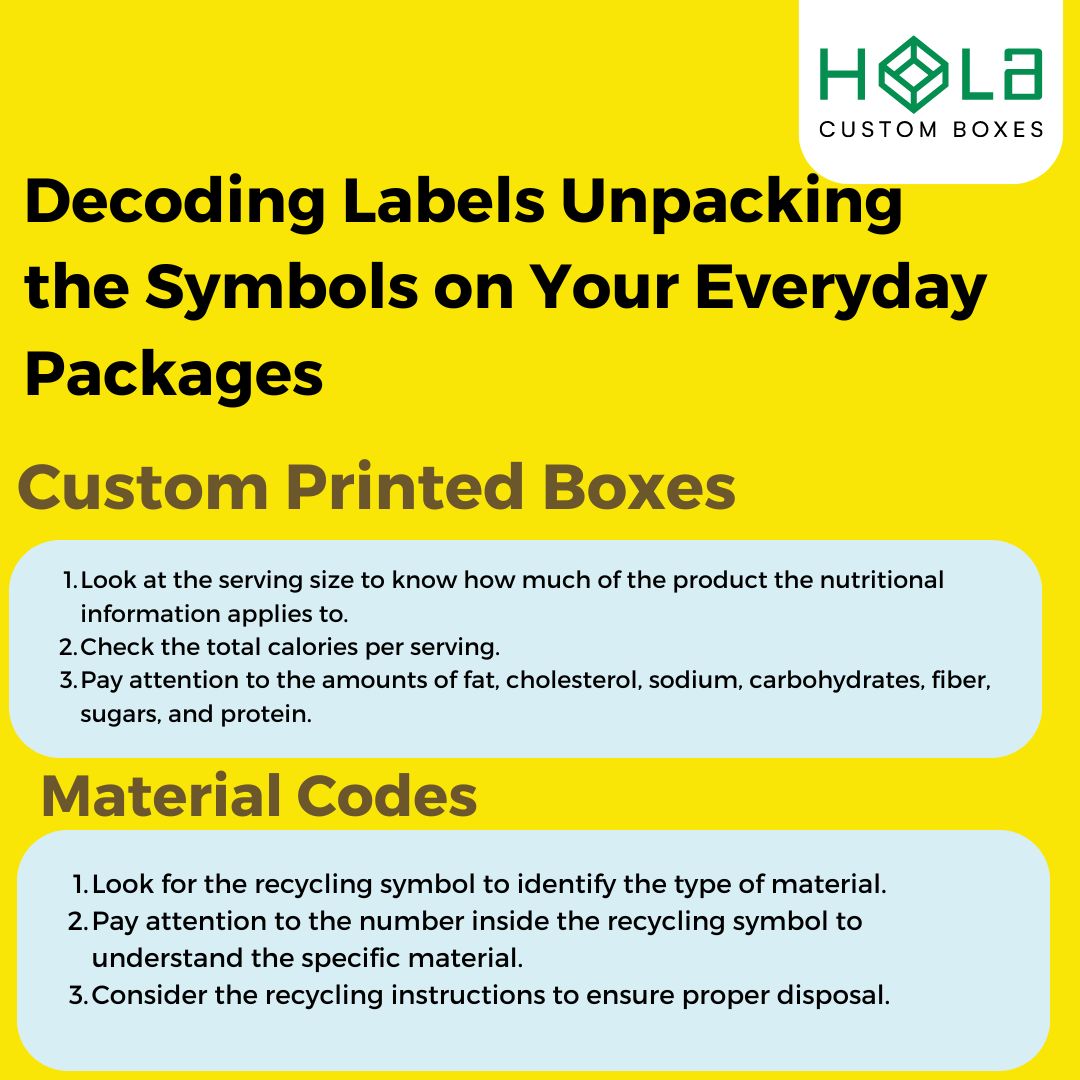Decoding Labels Unpacking the Symbols on Your Everyday Packages
2025-08-14 14:17:29
If you've ever struggled to make sense of the symbols and numbers on your food and product labels, this article is for you.
We'll help you understand expiration dates, decipher nutritional information, interpret quality assurance symbols, unravel packaging material codes, and analyze allergen warnings.
Get ready to unlock the secrets hidden in the labels of your everyday packages.
Key Takeaways
- Understanding expiration dates is important for ensuring product freshness and safety
- Nutritional information helps in understanding the nutrients and serving sizes of the product
- Quality assurance symbols on packaging indicate specific standards and certifications
- Recycling symbols on packaging materials help in making eco-friendly choices and proper disposal
Understanding Expiration Dates On Custom Packaging

When checking expiration dates, you should look for the specific day, month, and year listed on the package. It's crucial to pay attention to these details to ensure the product's freshness and safety.
Remember to discard items after their expiration date has passed, as consuming expired products can pose health risks.
Cost-Effectiveness of Shipping Insurance
While shipping insurance comes with an added expense, its value lies in the significant protection it offers against potential losses. By covering damages, theft, or lost shipments, insurance ensures that businesses avoid bearing the full cost of unforeseen shipping mishaps, making it a practical and cost-effective safeguard.
Protection Against Financial Risks
Without shipping insurance, any loss or damage during transit can directly impact a business’s bottom line. The relatively small investment in insurance serves as a financial safety net, protecting shipments and providing peace of mind that outweighs the upfront cost.
Interpreting Quality Assurance Symbols On Product Packaging
You can identify quality assurance symbols on product packaging by looking for specific logos or marks that indicate the product has met certain standards or certifications.
Common symbols include the USDA Organic seal, Fair Trade Certified logo, and Non-GMO Project Verified mark.
These symbols assure consumers that the product has been rigorously tested and meets specific quality standards, such as organic farming practices, fair labor conditions, or absence of genetically modified organisms.
Unraveling Custom Packaging Material Codes
Understanding the significance of recycling symbols on packaging material codes helps you make informed decisions about disposal and environmental impact.
When unraveling packaging material codes, keep in mind:
Look for the recycling symbol to identify the type of material.
Pay attention to the number inside the recycling symbol to understand the specific material.
Consider the recycling instructions to ensure proper disposal.
Knowing the packaging material codes aids in making eco-friendly choices.
Analyzing Allergen Warnings On Packaging
Check the product's ingredient list for any allergen warnings, ensuring your safety when using the item. Common allergens like nuts, dairy, soy, and wheat are often highlighted in bold or capitalized to draw your attention.
Be vigilant, as allergen warnings can sometimes be found in unexpected places, such as in the 'may contain' section. It's crucial to be aware of these warnings to avoid any potential allergic reactions.
Conclusion
Next time you go grocery shopping, take a closer look at the labels on your favorite products.
By understanding expiration dates, nutritional information, quality assurance symbols, packaging material codes, and allergen warnings, you can make more informed choices about what you put in your body.
Don't let confusing labels and symbols intimidate you - armed with this knowledge, you can confidently decode the information on your everyday packages.
Happy decoding!
